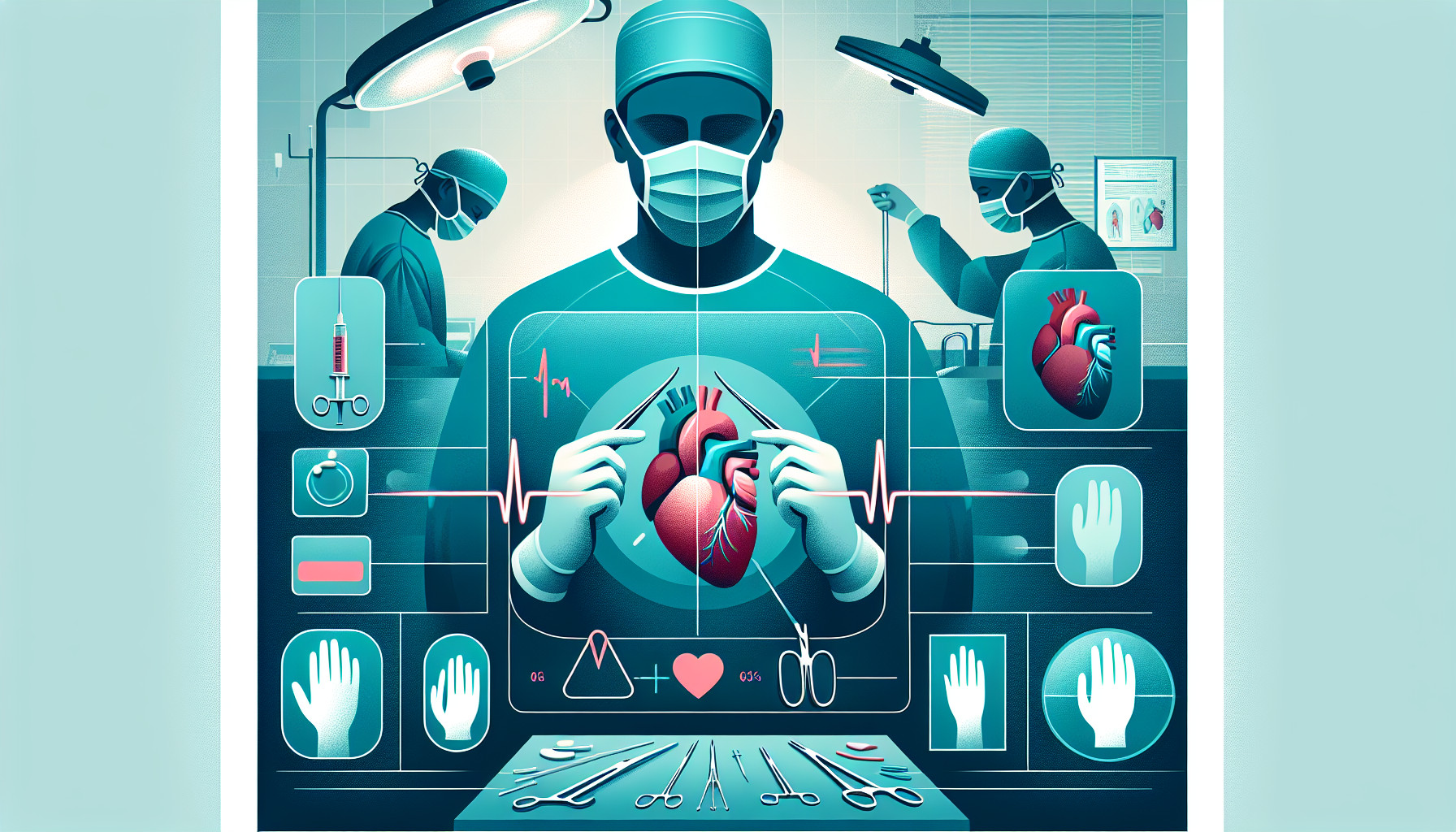Our Summary
The study is about a new method of heart transplantation that’s less invasive than traditional surgery. Usually, heart transplants are complex and require a large incision in the chest. This research team wanted to see if they could do the same operation using a robot, which would be less invasive.
They practiced this new method on several cadavers using a robot-assisted approach and made sure to limit the time the donor heart was without blood flow to ensure patient safety. Once they felt ready, they performed the operation on a 16-year-old boy with severe heart failure caused by a nonischemic dilated cardiomyopathy - a disease of the heart muscle.
The operation was successful. The time the heart was without blood flow was short, the patient needed a ventilator for less than 24 hours, he was able to move around quickly after the surgery, and he experienced less pain and a shorter hospital stay than expected. The study was conducted at the King Faisal Specialist Hospital and Research Centre in Riyadh, Saudi Arabia.
In simple terms, they developed a new way to do heart transplants that’s less invasive and might make recovery easier for patients. This could be a big step forward in heart transplant surgery.
FAQs
- What is the traditional method of performing heart transplant surgeries, and why is this method used?
- How was the technique for a totally robotic heart transplant developed?
- What were the outcomes of the first successful totally robotic heart transplant?
Doctor’s Tip
A helpful tip a doctor might tell a patient about heart transplant is to follow a strict medication regimen to prevent rejection of the new heart. It is important to take immunosuppressant medications as prescribed and to attend regular follow-up appointments with your transplant team to monitor your progress and adjust medications as needed. Additionally, maintaining a healthy lifestyle with regular exercise and a balanced diet can help support the success of the transplant.
Suitable For
Patients who are typically recommended for heart transplant surgery are those with end-stage heart failure that is not responsive to other treatments, such as medication or device therapy. This may be due to conditions such as dilated cardiomyopathy, coronary artery disease, congenital heart defects, or other heart-related issues. Patients must also meet certain criteria for transplant eligibility, including being in good overall health and having a strong support system in place for post-transplant care.
Timeline
Before heart transplant:
- Patient is diagnosed with end-stage heart failure and is deemed a candidate for heart transplantation.
- Patient undergoes a series of tests and evaluations to determine their eligibility for a transplant.
- Patient is placed on the transplant waiting list and waits for a suitable donor heart to become available.
- Once a donor heart is found, the patient is notified and prepared for surgery.
After heart transplant:
- Patient undergoes heart transplant surgery, which may be performed using a traditional median sternotomy or a minimally invasive robotic approach.
- After surgery, the patient is closely monitored in the intensive care unit for complications and to ensure the new heart is functioning properly.
- Patient begins a regimen of immunosuppressant medications to prevent rejection of the donor heart.
- Patient undergoes rehabilitation and physical therapy to regain strength and mobility.
- Patient is monitored closely by their medical team for signs of rejection or complications.
- With successful recovery and proper care, the patient can expect improved quality of life and longevity with their new heart.
What to Ask Your Doctor
- What are the risks and benefits of undergoing a robotic heart transplant compared to a traditional heart transplant surgery?
- How experienced is the surgical team in performing robotic heart transplants?
- What is the expected recovery time and rehabilitation process after a robotic heart transplant?
- How will post-operative care be managed, including medication management and follow-up appointments?
- Are there any specific lifestyle changes or restrictions that will need to be followed after a robotic heart transplant?
- What is the success rate of robotic heart transplants compared to traditional heart transplants?
- How will organ rejection be monitored and managed after a robotic heart transplant?
- Will there be any long-term complications or side effects to be aware of after a robotic heart transplant?
- How can I best prepare physically and emotionally for undergoing a robotic heart transplant surgery?
- Are there any alternative treatment options to consider before deciding on a robotic heart transplant?
Reference
Authors: Khaliel FH, Haq MI, Alsulbud AK, Altwaijri YA, Alenazy AB, Almustafa AR, Aly AA, Mehra MR. Journal: J Heart Lung Transplant. 2025 Jun;44(6):1000-1003. doi: 10.1016/j.healun.2025.02.1685. Epub 2025 Feb 25. PMID: 40015612
